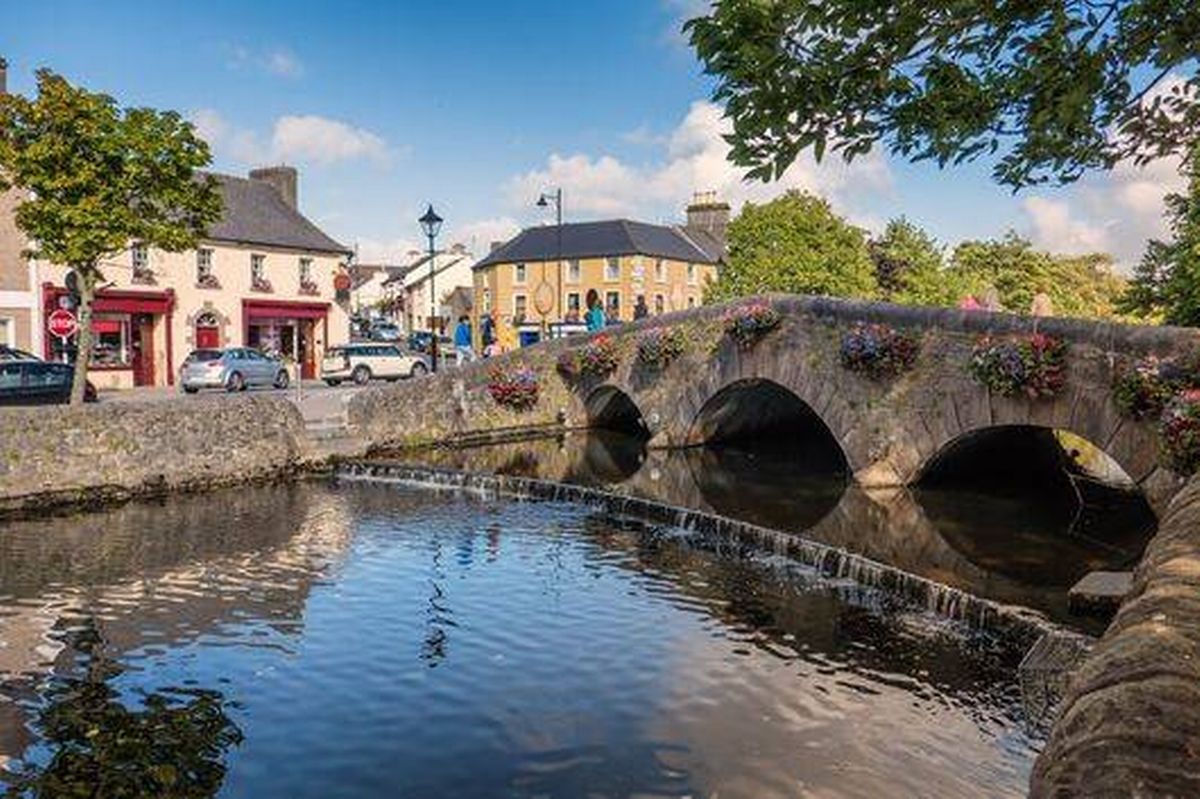The pretty market town was crowned Best Place to Live in the country in 2012 and won the Irish Tidy Towns Competition three times, yet few tourists make it there
The UK is home to some truly stunning villages and towns. From cobbled streets winding through rolling countryside to clifftop whitewashed hamlets and fairy-tale cottages scattered across the landscape, Britain has it all.
But travel just a bit further afield, and you’ll discover places that could easily rival – or even outshine – the best of what Britain has to offer. Westport in County Mayo, Ireland, is one such gem. Getting there couldn’t be easier, with Ryanair, British Airways, and Aer Lingus all flying into Knock, the closest airport to Westport. From there, it’s just an hour’s drive west to this coastal Heritage Town.
The journey itself is a treat, with the scenery becoming increasingly dramatic as you near the Atlantic and the mountains loom larger. Croagh Patrick, known as Ireland’s “Holy Mountain,” sits just five miles from town, its distinctive cone-shaped peak dominating the skyline above Clew Bay.
READ MORE: UK to Germany direct train will make Christmas market trips ‘one step closer’READ MORE: Free UK attraction for kids crowned best in Europe after 3-year makeover
The mountain draws both pilgrims and tourists alike. Every year on the last Sunday in July, worshippers make the gruelling climb to the summit, where they visit a chapel, attend Mass, and often perform acts of devotion – some even tackling the ascent barefoot or on their knees.
If that sounds a bit too intense for a relaxing break, don’t worry – there’s plenty to keep you entertained in the town itself. Westport boasts a beautiful Georgian town centre, while stone bridges span the tree-lined paths that run alongside the River Carrowbeg.
The town is remarkably pristine, offering an exceptional quality of life. Westport has triumphed in the Irish Tidy Towns Competition three times – in 2001, 2006, and 2008 – and was named Best Place to Live in Ireland by The Irish Times in 2012.
It comes as no surprise that Westport is home to a wealth of outstanding pubs. Venues like Matt Molloy’s, MacBride’s, Porter House, and JJ O’Malley’s are all reliable choices and regularly feature traditional Irish bands in the evenings.
When the weather’s nice, tourists can wander along the Quay before making their way to The Point. “This is a fabulous place to meet locals on a nice day as they swim in the shallow waters of Clew Bay. I sat at a table and laughed as they chatted with each other, calling to friends who were not in the water. It was a kick to be a fly on the wall and witness friends and neighbours giving each other a hard time and laughing and gossiping,” notes travel blogger Wander Your Way.
Many tourists staying in Westport opt to explore destinations beyond the town centre, immersing themselves in the dramatic beauty of the countryside. A popular local saying in Clew Bay claims there’s “an island for every day of the year.”
In reality, there are roughly 120 designated islands, alongside countless smaller submerged limestone drumlins that appear when the tide goes out.
Clare Island is the largest of the true islands, its majestic silhouette looming on the horizon like a giant humpback whale. The short ferry crossing from Roonagh Pier is essential for visitors, providing spectacular walks and vistas. Clare attracts birdwatchers in their droves, who come to spot kittiwakes, fulmars, peregrines, guillemots, and the most charming of all – puffins.
For those prepared to travel further offshore, Inishturk beckons, billed as a “little piece of paradise,” according to the local tourism authority. Must-sees include the golden sands of Tra na nUan and Curraun, Ireland’s sole offshore-island natural lagoon, dramatic sea cliffs, and uncommon wild flora.
Westport is a treasure that’s difficult to fault, commonly considered a combination of Ireland’s best natural attractions with welcoming culture and streets that remain pleasantly uncrowded.
“I am a huge fan of Westport and County Mayo, perhaps because my wife’s cousin owns the Clew Bay Hotel and Madden’s Restaurant. I highly recommend both. Renting bikes in Westport and riding the Great Western Greenway is fantastic, love it. It’s a charming little town with excellent restaurants and pubs,” one devotee recently posted on Reddit. Another person enthused: “I second Westport! My wife and I had our honeymoon there (years ago, and in Clew Bay Hotel too! ) and frequently return. The people in the restaurants, bars, and shops are all so welcoming. If you’re not a fan of the pubs (and the music), there are plenty of interesting and easily accessible walks and cycle paths nearby. Can’t wait to go back!”.
A third observer noted: “It really does seem magical out there, lots of outdoor activities and seems less busy with tourists.”

